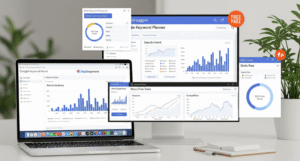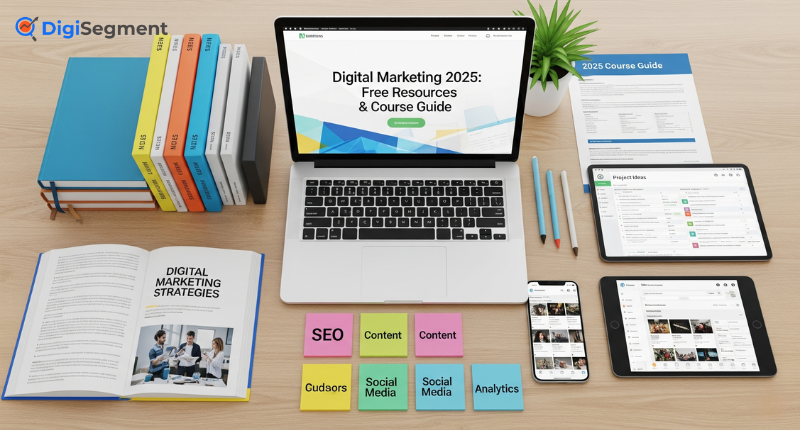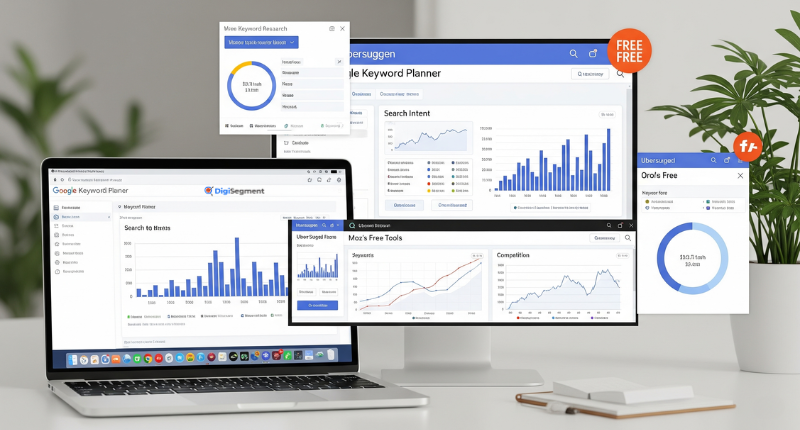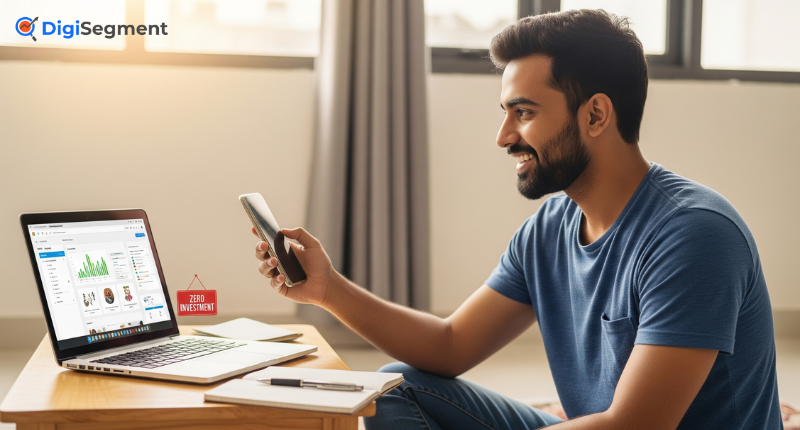Have you ever wondered why certain websites feel more responsive, load quicker, and rank better on Google? The solution often resides in page speed optimization metrics.
It’s one of those terms that sounds technical, but once you understand user experience signals, it’s easy to apply.
These website performance metrics are practical SEO factors to optimize for both users and Google, so rankings improve.
So grab a cup of coffee, and let’s dissect web performance best practices in a simple, straightforward, and actually-comprehensible way.
What Are Core Web Vitals?
Let’s start with the fundamentals, because understanding website performance metrics is crucial for SEO success.
User experience signals are a set of distinctive metrics that Google uses to measure how well your site performs.
Think of them as Google’s report card for page speed optimization, so you know how your site ranks in user experience.
They grade how fast your page loads, how quickly it becomes interactive, and how stable it remains while users browse.
There are three main web performance best practices metrics that you should focus on to improve rankings and engagement:
Largest Contentful Paint (LCP)
It measures the performance of page loading speed, so users can access content quickly and smoothly.
It would be ideal if your page’s main content loads within 2.5 seconds because website performance metrics impact both rankings and user experience.
First Input Delay (FID)
It measures first input delay, so your page responds quickly to user actions and keeps engagement high.
Your page should react to a user’s first tap or click within 100 milliseconds because user experience signals impact rankings and satisfaction.
Cumulative Layout Shift (CLS)
It measures cumulative layout shift, so your page remains visually stable and users can navigate comfortably.
Your page should not jump or move while it loads, because a CLS score below 0.1 ensures good web performance metrics.
All three of these together form your site’s user experience signals, and they directly impact SEO rankings and engagement.
Why Are Core Web Vitals Crucial to SEO?
Because Google cares about user experience signals, website speed and stability significantly affect search rankings.
No one likes a slower or jumpier website, so Google rewards pages that are fast, responsive, and stable.
If your web performance metrics are optimized:
- Your visitors stick around longer because navigation is smooth
- Bounce rates drop, and engagement improves
- Conversion rates increase, so your business benefits
- Rankings improve because Google values page speed optimization metrics
Google officially added page experience metrics to its ranking system in 2021, so improving them is required to appear on page one.
If you’re running a business or agency website like Digi Segment or HV Digital Marketing, website optimization best practices can bring more clients organically without increasing ad spend.
The Three Core Web Vitals Explained (With Real Examples)
1. Largest Contentful Paint (LCP)
Think of browsing a website, and the main banner takes forever to load, so it harms largest contentful paint.
Now imagine it loading instantly, and that’s excellent page speed optimization.
To improve it:
- Optimize images using WebP format because smaller files load faster
- Enable browser caching, so returning visitors experience quicker load times
- Use a fast hosting provider to improve website performance metrics
- Cut unnecessary JavaScript, and remove slow scripts to enhance user experience signals
2. First Input Delay (FID)
This measures first input delay, so your site reacts quickly when a user clicks a button or menu.
If your page takes several seconds to respond, users get frustrated and may leave, so bounce rates rise.
To optimize user experience signals:
- Shorten JavaScript execution time because faster scripts improve responsiveness
- Implement lazy loading, so content appears smoothly without slowing page interaction
- Defer non-critical scripts, and prioritize essential scripts for web performance metrics
3. Cumulative Layout Shift (CLS)
You’ve been there before — you click a button, but the page shifts, so you click something else unintentionally. Frustrating, right?
That’s what cumulative layout shift measures — how visually stable your page is while content loads, so users stay engaged.
To optimize web performance metrics:
- Always provide size attributes for images and videos because browsers can reserve space and prevent layout shifts
- Avoid pop-ups that move content, so your page feels stable and professional
- Use consistent fonts and layout design, and this improves user experience signals as users navigate
How to Check Your Core Web Vitals
Google also offers free tools to make it a breeze to check Core Web Vitals:
PageSpeed Insights
Simply put in your URL, and you will have in-depth Core Web Vitals scores.
Google Search Console
Offers a “Core Web Vitals” report for your entire site.
Lighthouse
A Chrome DevTool that gives you in-depth performance analysis.
Web.dev
Another Google tool to test metrics and receive improvement recommendations.
If you have an agency site such as HV Digital Marketing, you can even use these tools to create performance reports for your customers — it’s a great way to show genuine data and demonstrate results.
How to Optimize Core Web Vitals Step-by-Step
Here is a simple web performance optimization checklist that you can apply to improve user experience signals:
Task | Why It Matters | Tools to Use |
Compress images | Improves largest contentful paint, so pages load faster and users stay engaged | TinyPNG, ShortPixel |
Enable caching | Accelerates repeat visits because returning users access content quicker | WP Rocket, LiteSpeed Cache |
Use a CDN | Decreases latency, so global users experience faster page speed optimization metrics | Cloudflare, BunnyCDN |
Minify CSS/JS | Reduces file size and load time, so your website performance metrics improve | Autoptimize |
Preload vital resources | Loads critical assets faster because browsers prioritize important content | HTML preload tags |
Limit third-party scripts | Avoids delays, and unnecessary widgets don’t block user experience signals | Remove unused scripts |
Utilize responsive images | Boosts cumulative layout shift, so your page stays visually stable | srcset and sizes attributes |
Optimize fonts | Blocks layout changes because font-display settings reduce content shifts | font-display: swap |
Core Web Vitals and SEO Strategy
User experience signals aren’t just about speed, and they also focus on user satisfaction and engagement on your site.
A fast, stable site keeps visitors around longer, so they interact more, engage better, and may even convert. Google rewards that behavior as well.
When you incorporate web performance metrics optimization into on-page SEO, content marketing, and link building, your overall SEO improves significantly.
If you are running content campaigns, Meta Ads at HV Digital Marketing, or blog optimization with Digi Segment, then make page speed optimization a priority in your SEO strategy because it boosts traffic and conversions.
Real-Life Example: Why Core Web Vitals Matter
You have a website for a clothing store, and your home page features gorgeous photos and chic sliders, but it still takes 6 seconds to load.
Shock — 50% of your traffic will bounce before they even see your products, so sales and engagement drop.
Then you compress images, avoid layout shifts, and preload critical elements, so your page now loads in 2 seconds, and conversions rise by 30%.
That’s the power of web performance metrics, because optimizing page speed optimization, user experience signals, and visual stability directly impacts traffic, leads, and conversions.
Core Web Vitals for Mobile SEO
More than 60% of all web traffic comes from mobile devices, so user experience signals on phones matter greatly.
If your site isn’t mobile-friendly, your web performance metrics will suffer, and page speed optimization may drop.
Ensure your site:
- Uses responsive design, so content adapts smoothly to all screen sizes
- Has lightweight mobile images because faster load times improve largest contentful paint
- Avoids intrusive pop-ups, and maintains cumulative layout shift stability
- Loads fonts and scripts responsibly, so website performance metrics remain optimal
Google’s mobile-first index means your mobile site’s page experience metrics directly influence search rankings.
Wrapping It Up
Web performance metrics are more than technical SEO factors, and they focus on giving visitors a smooth, frustration-free experience.
So if you’re dedicated to SEO in 2025, make optimizing page speed optimization and user experience signals a top priority for on-page SEO.
Start small: check your scores, fix one issue at a time, and continue monitoring progress because consistency matters.
And if you’d rather have professionals handle it, you can contact Digi Segment or HV Digital Marketing, because these agencies focus on real results, not just rankings.
Ultimately, SEO isn’t about pleasing Google, but rather giving your audience an amazing experience through optimized website performance metrics.
FAQs:
Web performance metrics are Google’s standards that measure website performance, and they focus on page speed optimization, interactivity, and visual stability to enhance user experience signals.
They affect your Google rankings and user experience signals, because faster, more stable websites keep visitors longer and engage better.
Faster pages improve page speed optimization and web performance metrics, so your site performs better in search results and conversions increase.
Largest Contentful Paint (LCP), First Input Delay (FID), and Cumulative Layout Shift (CLS) track page speed optimization, responsiveness, and visual stability, so user experience improves.
They measure web performance metrics, and when optimized, your site loads faster, interacts smoothly, and remains visually stable for visitors.
Use tools like Google PageSpeed Insights, Search Console, or Lighthouse to test and monitor your site’s Core Web Vitals performance.
Google recommends: LCP under 2.5s, FID under 100ms, and CLS under 0.1 for a great user experience.
Compress images, enable caching, reduce JavaScript, and use a CDN to make your site load faster and stay stable.
Yes. Google considers Core Web Vitals a ranking factor, so optimizing them improves your visibility and search performance.
No. They’re equally important for mobile because Google uses mobile-first indexing for ranking and crawling.
I’m Hardik Vaghani, founder of HV Digital Marketing, a results-driven digital marketing agency. I specialise in SEO, Google Ads, and social media marketing, helping businesses grow their online presence with proven strategies. I’m passionate about creating high-quality, SEO-optimised blogs that educate readers and rank on Google. My goal is to turn ideas into measurable digital success through smart, ethical marketing.













